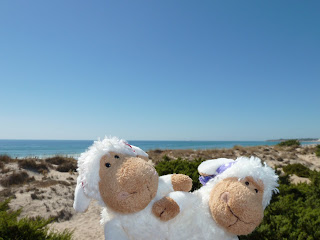Teruel es una preciosa ciudad española, muy conocida por su arte Mudéjar (único en el mundo), que merece la pena visitar.
Posee una preciosa historia, la historia de los amantes de Teruel, en la que se basan muchas leyendas de amor. Es tan bonita y tan triste, que os la voy a contar aquí:
Sin embargo y debido a las rencillas que padecían ambas familias, ya por rivalidad nobiliaria, ya por razones ideológicas religiosas en tiempos de conflictos judíos, el padre de Isabel se opuso enérgicamente al enlace, si bien dio la opción al pretendiente de que buscase fortuna, y en caso de conseguirla en un plazo de cinco años, daría su consentimiento al matrimonio.
Y Juan Diego de Marcilla partió a las Cruzadas tras la fortuna que lo llevaría a los brazos de su amada Isabel.
Pero mientras el joven batallaba contra el infiel, el padre de Isabel se enfrascó en la hacienda de buscar un marido conveniente para ella, hacienda que consiguió encontrando como pretendiente al potentado hermana del Señor de Albarracín, celebrándose el enlace en 1217, el mismo día en que Juan Diego regresaba de las Cruzadas.
Desalentado ante la noticia, Diego consiguió reunirse con Isabel y suplicarle un beso, al que ella se negó considerando el deber y respeto hacia su marido. Esta negación dio de lleno en el corazón del desengañado enamorado y como fulminado por un rayo, cayó inerte al suelo. Sus funerales se realizaron al día siguiente.
Isabel, desconsolada ante los acontecimientos y rota por la muerte de quién aún seguía amando, quiso regalarle el beso que antes le había negado y posó sus labios en los ya pétreos de su amor. En el mismo instante en que sus labios se unieron ella quedo desvanecida sobre el cadáver. Había muerto.
Los familiares, rendidos ante tal acontecimiento, realizaron el mismo día los funerales de ambos y fueron enterrados juntos.
El juez de Teruel, don Domingo Celada, testimonió los hechos por escrito y sepultó el documento junto a los amantes.”
Fuente: http://espanaeterna.blogspot.com/2010/09/los-amantes-de-teruel-historia-y.html?spref=fb
There is a beautiful story, the story of the Lovers of Teruel, a sad love story that I am going to tell you:
The Lovers of Teruel (in Spanish Los amantes de Teruel) is a romance story that is alleged to have taken place in 1217 in the city of Teruel (Aragón)
In the city there were two important and wealthy families, Marcilla and Segura. Juan Martinez (also known as Diego) was a Marcilla and Isabel a Segura. The two were in love as childhood playmates but when they were both at an eligible age to wed, Diego's family had fallen on hard times. Isabel's father, being the most wealthy in all of Teruel, forbade the marriage. Diego, however, was able to make an agreement with the father in which he would leave Teruel for five years to try to build his fortune. If Diego was able to gain wealth within those five years he would be able to marry his love, Isabel.
During those five years her father pestered her to marry someone. She replied to him by saying that God wished her to remain a virgin until she turned twenty, saying that women should learn how to manage the household before getting married. Because her father loved her dearly and wished for her happiness he agreed, and for five years they waited for Diego's return.
Diego was not heard from in those five years and so on the day of the five years' close Isabel's father married her to Don Pedro de Azagra from Albarracín. Right after the wedding ceremony there was a commotion at the Zaragoza gate. The watchmen informed the village that Diego Marcilla had returned with great riches and with the intent of marrying Isabel. Diego had not counted the day in which he petitioned Isabel's father whereas the Seguras had.
That night, Diego sneaked into the bedroom of Isabel and her husband and gently awoke her. He pleaded to her, "Besame, que me muero," (Kiss me for I am dying) and she refused, saying "No quiera Dios que yo falte a mi marido," (God would not wish me to deceive my husband) "Por la pasion de Jesucristo os suplico que busques a otra, que de mi no hagais cuenta. Pues si a Dios no ha complacido, tampoco me complace a mi." (For the love of Christ, I beg you to find another, and forget about me. If our love could not please God, then neither should it please me.)
He begged her one last time, saying that he was dying and wished for a final kiss. But still she refused. Upon hearing this Diego could not bear the separation between himself and his love, and with a sigh he died on the feet of his beloved Isabel. When she realized that he died, she shivered. She woke her husband, telling him that his snoring scared her and she wished to hear a story. And he did, and in return she told him her own story. She told him of Diego and how he lay dead beside the bed.
"Oh, you wretched! Why did you not kiss him?"
"To not deceive my husband." She replied.
"Of course," he groaned. "You are a woman worthy of praise."
They agreed on secretly burying him in the local church because the husband feared that he would be blamed for his death. The next day, during the funeral for Diego Marcilla, Isabel showed up dressed in her wedding dress. She proceeded to walk to the front of the church and place a kiss on the man whom she had refused but in doing so Isabel died, falling prostrate on the body of the man whom she loved.(From Wikipedia)

























